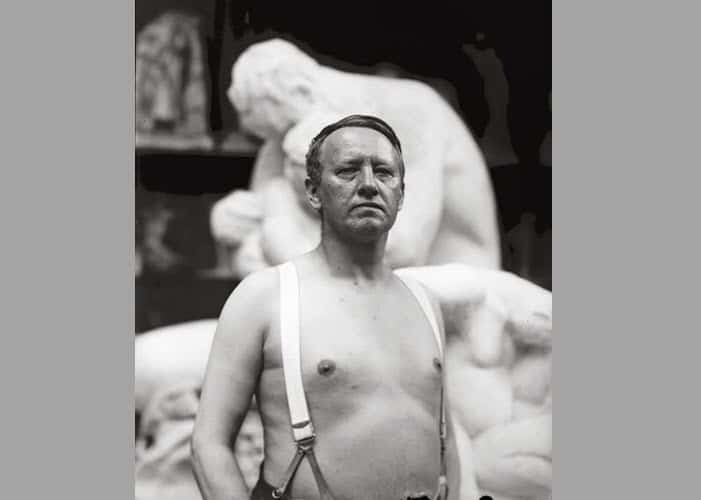Gustav Vigeland (11 April 1869 – 12 March 1943) was a Norwegian sculptor, most famous for his work on the Vigeland installation, a large sculpture park located in Oslo, Norway.
Life and Career
He was born on 11 April 1869, in Norway. He received his early education at the Christiania Technical School, where he studied drawing and wood carving. He later attended the Royal School of Art and Design in Oslo, where he studied sculpture under the guidance of prominent Norwegian sculptors, including Brynjulf Bergslien and Julius Middelthun.
In 1893, Vigeland was awarded a scholarship to study in Paris, where he attended the Académie Colarossi and worked as an assistant in the studio of the French sculptor Auguste Rodin. He was deeply influenced by Rodin’s work and techniques, and this experience had a significant impact on his artistic style.
After returning to Norway in 1896, Vigeland continued to develop his skills as a sculptor, working on various commissions and exhibitions. In 1902, he was awarded a state scholarship, which allowed him to travel to Italy and study classical sculpture. This experience further enriched his artistic style and helped him to develop a more refined approach to his work.
He is most famous for his work on the Vigeland installation, a large sculpture park located in Oslo, Norway. The park contains over 200 sculptures, all created by Vigeland himself, and depicts human figures in various poses and emotions. The sculptures are arranged in a carefully designed architectural setting and are made from a variety of materials, including bronze, granite, and cast iron. The most famous sculpture in the park is the Monolith, a 14-meter-high granite column depicting human figures carved in a single piece of stone. Other notable sculptures in the park include the Fountain, the Bridge, and the Wheel of Life.
In addition to his work on the Vigeland installation, he also created a number of other sculptures and monuments throughout Norway, including the statue of Henrik Ibsen in Oslo and the War Memorial in Trondheim. He also designed the Nobel Peace Prize medal, which has been awarded annually since 1901.
He died on 12 March 1943 in Oslo, Norway.
Today, Gustav Vigeland is considered one of Norway’s greatest artists, and his work has had a lasting impact on the world of sculpture. The Vigeland installation in Oslo is one of the most popular tourist attractions in Norway, and it continues to inspire and captivate visitors from around the world.
Award and Legacy
He received numerous awards and honors during his lifetime, including the Order of St. Olav, Norway’s highest honor, which he received in 1929. In 1940, he was awarded the Grand Cross of the Order of Merit of the Italian Republic.
His legacy is also evident in the many other sculptures and monuments he created throughout Norway, as well as in his designs for the Nobel Peace Prize medal. His ability to capture the human form in a natural and expressive way continues to inspire sculptors and artists around the world.
In recognition of his contributions to the world of art, the Vigeland Museum was established in Oslo in 1947, and it is dedicated to preserving and showcasing Vigeland’s work. The museum contains a large collection of Vigeland’s sculptures, drawings, and sketches, as well as a library and archive of documents related to his life and work.

